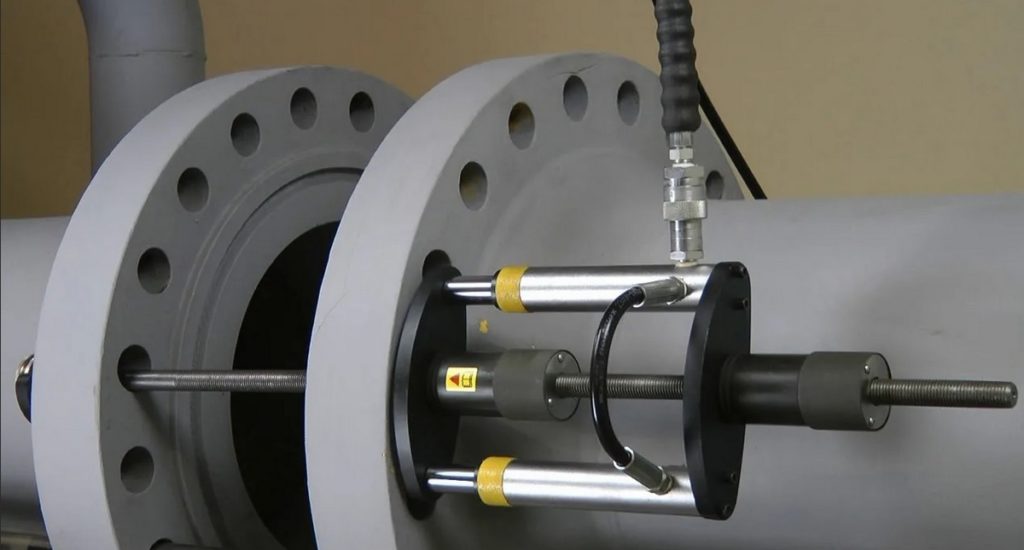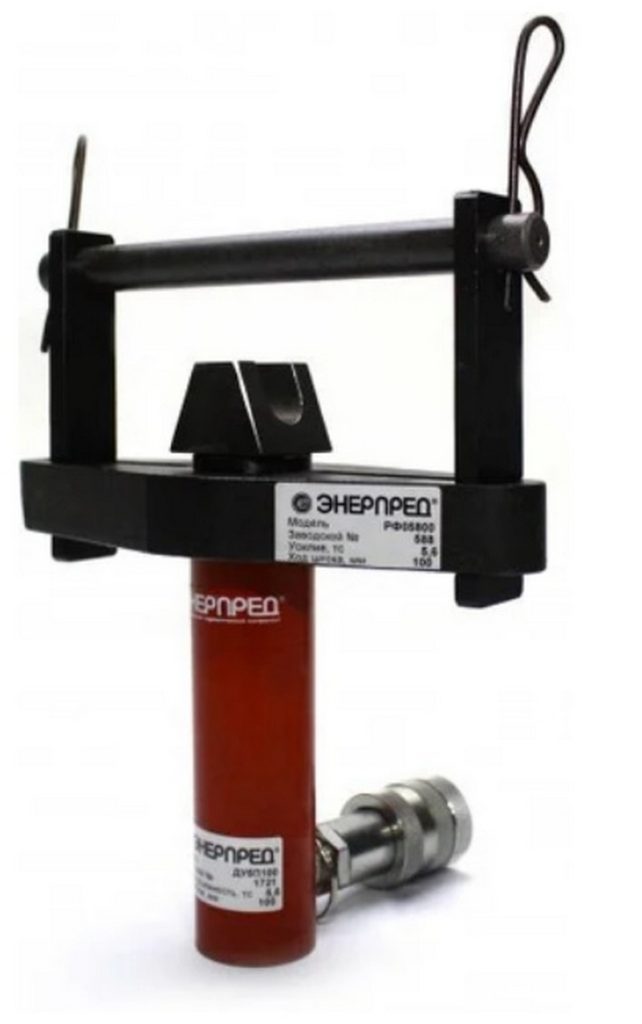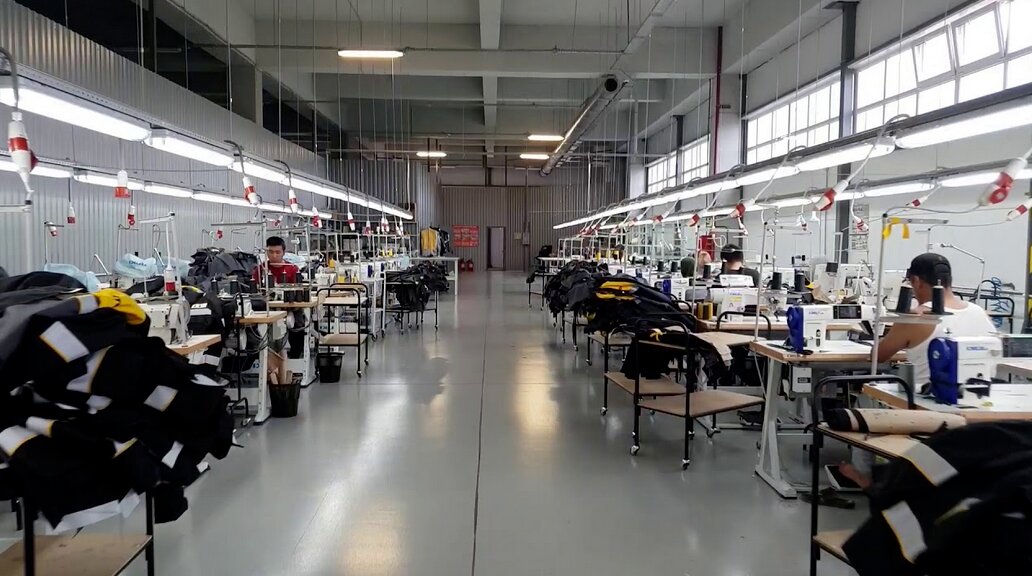Ranking of the best flange spreaders for 2025

Flange spreaders are a fairly simple system designed to drive wedges between two flanges on pipes, and the pipes do not receive significant mechanical damage, and the energy expended for this work is minimal. The tools in question are used to straighten flanges on pipelines during the replacement of gaskets, replacement of valve equipment, and replacement of various valves on main pipelines and gas pipelines. It is also used for main water pipelines and heating plants included in heating systems, as well as for pipelines used in the petrochemical and oil and gas industries.

The design of the booster completely eliminates the risk of sparking, which, coupled with its compactness and autonomy, increased working force, can provide increased efficiency and safety of the work process. The accelerator is qualitatively different from such improvised means as a flange expander, because its use for accelerating work is more likely to damage the flange. The design feature of the booster itself suggests that no damage will be caused to the flanged joint that is being expanded.
Thus, flange accelerators are capable of:
- Without effort and with care, replace worn parts of the flange assembly;
- Connect the desired sections under the condition of guaranteed tightness;
- Avoid damage during operation of the immediate parts of the pipeline;
- In a short time to cope with a fairly large amount of specialized work.
Content [Hide]
Modern types of overclocking tools
In total, there are three types - mechanical, hydraulic and autonomous. Mechanical models are put into operation due to the muscular strength of the operator, by turning the ratchet wrench. However, their work is carried out with some restrictions. So, the maximum gap for dispersing flanges with such a device can vary from 92 to 94 millimeters, and the minimum gap cannot be less than 6 millimeters.
The design of hydraulic devices is complemented by hydraulic pumping mechanisms. This type of device is often not very convenient to use in confined spaces or hard-to-reach places due to their bulkiness. However, these samples have both better performance and extended service life.
Autonomous are called such models in which the hydraulic installation is built into the design. It is much easier to work with such a system, because you do not need to carry additional hydraulic modules with you everywhere. Stand-alone instruments are the most advanced available today and fully utilize the latest flange expansion technology.
IMPORTANT! It should be noted that modern flange connections are made at such a high level that the scope of mechanical spreaders is extremely narrowed - with their help it is possible to push apart only classical-type joints in pipelines. Therefore, hydraulic models have become the standard of use.
The most popular hydraulic flange spreader has the following conventional arrangement:
- Housing - it contains a working piston with a hydraulic cylinder;
- Two sliding racks - they perform a direct separation;
- Pin (block) - fixes the flange in the extended position;
- Safety steps - responsible for the safety of work.
In a simplified manner, the operation process is as follows: hydraulic fluid (most often oil) is injected into the cylinder by means of an external / internal pump, after which the force is transferred to the sliding racks and they are unclenched. At the end of the work, the pressure in the pump is relieved by means of the bypass screw, and the sliding racks return to their original position by weakening the return spring.
Design features of some types of accelerators
In general, any sliding equipment for flange connections must meet the following criteria:
- Stepped support and safety parts of the device must be made of high quality metal;
- The case of the device must be processed by an electro-chemical method in order to improve the quality of its wear resistance;
- The working elements of the wedge must be coated with specialized materials in order to prevent the occurrence of corrosion marks and the formation of "burrs", as well as to reduce friction.
Depending on the area of application and the general design of the design, the devices in question can be divided into wedge-shaped or stepped accelerators.
Wedge Models
Such equipment is used to push apart joints, in which the size of the studs is up to 41 mm with a total flange length of up to 92 mm.The dismantling of the assembly with special care allows the simultaneous use of two similar devices, which are located on opposite sides of the pipeline being processed. In this case, the accelerator's finger must be inserted into the hole in place of the pin, and only then both "paws" of the device are placed in a symmetrical direction opposite each other. In this way, there will be no excess load that could cause unauthorized displacement of the entire connection. Further, oil is forcibly supplied to the hydraulic system (or cylinder, if we are talking about an autonomous model), which extends the stem, and the resulting pressure expands the pipe connection in its cut. With the cessation of the oil supply, the stem returns to its original position, and the flange connection is closed.
Step models
These samples of the equipment in question are used to disconnect larger flange connections, in which the minimum gap must be at least 6 millimeters. With the help of special nozzles, it is possible to separate the joint by 81 millimeters, which will be enough to change worn gaskets and to carry out other pipe maintenance activities. At the initial stage of work, the stepped model should be inserted into the gap between the flanges in a perpendicular plane, while even the slightest distortion should not be allowed. The connection is disassembled by supplying oil to the hydraulic cylinder, or by rotating the built-in screw inside the structure of the mechanical type of the accelerator.At the end of the routing of the edges, strong safety elements are installed inside the joint, capable of reliably holding the edges of the pipe at the required distance in order to provide the required space for repair or maintenance work.
The procedure for working with a hydraulic booster
- The place of work must be thoroughly cleaned and completely free from foreign objects.
- Only the presence of personnel who will directly perform these works is allowed at the work site. Personnel who do not have access (who have not been instructed in the methods and safety precautions when performing work) and who are not trained in the rules for operating the equipment cannot be allowed to work.
- Next, you need to install the device at the point of operation. To do this, the wedge-shaped heads of the spreader are placed in the gap between the flanges at an entry angle of 180 degrees relative to each other until the vertical side reaches contact with the outer base of the flange.
- By applying pressure, the joint is separated to the required depth or to the maximum distance for the applied stage, after which it is required to insert a safety block (pin) into the resulting gap and redirect the load to it.
- Then you need to enter the wedge-shaped heads into the gap and apply the next stage of the wedge-shaped heads, in order to further separate the articulation. Again, if maximum divorce is required, it is worth installing a security block.
- The amount of pressure supplied to the booster, as well as the uniformity of the expansion of the flanges on both sides, must be regulated by means of valves installed on the two-flow manifold.
- Delivery pressure control should be monitored using a manometer.
- At the end of the work, disconnect the hose of the hydraulic apparatus and the two-flow manifold, and install caps for protection on the half-couplings of the quick couplings;
- The final working stage will be the cleaning of the equipment from contamination, its complete disassembly and packaging in a storage case.
Overclocker Maintenance Basics
As a rule, such equipment should be treated very carefully, like any other. However, there are a few rules that you need to follow constantly to keep the device in good condition:
- The product must never be stored in a dirty form - after each working process it must be completely cleaned;
- In order to avoid the risk of traumatic situations when working with the device, it is necessary to carefully monitor the quality of its articulations;
- All surfaces of the apparatus that are involved in the process of friction during operation must be constantly lubricated with a special grease.
Ranking of the best flange spreaders for 2025
Budget segment
3rd place: "Mechanical wedge-shaped POLIDEK RFMK-16"
votes 0
This simple and relatively inexpensive model is used for dispersing flange joints when changing sealing gaskets, setting various kinds of plugs, changing valves and other valves. The maximum allowable nominal diameter of the pipe to be processed is up to 100 millimeters, the maximum output forces are 2.5 megapascals. The country of origin is Russia, the established cost for store chains is 8200 rubles.

- Adequate cost;
- Reliability of execution of structural elements;
- Ease of use.
- Small output force.
2nd place: "Hydraulic MK RFG8-11-51N"
votes 0
A good model of a flanged tool, however, having the most minimal configuration. It will additionally have to buy a hydraulic installation, along with all the hoses and sleeves. At the same time, the sliding terminals themselves are made of high-quality tool steel and coated with chrome, which indicates an extended service life. The country of origin is China, the recommended retail price is 10,100 rubles.

- Quality steel of the working part;
- There is a chrome finish;
- Extended service life.
- Frankly poor equipment.
1st place: "Mechanical wedge-shaped POLIDEK RFMK-30"
votes 0
The classic model for extending flanges. It is able to reliably fix the dissected state of the pipeline for the purpose of replacing valves and plugs. It can work with large pipe diameters from 350 to 450 millimeters. The output force is 2.5 MegaPascals. The country of origin is China, the established retail price is 11,280 rubles.

- The wedge is made of high-strength tool steel;
- Ability to work with wide diameter pipes;
- Reasonable cost.
- Not detected.
Middle price segment
3rd place: "Hydraulic RFG9-56 (ROST)"
votes 0
This device is characterized by its small size and is able to work in confined spaces. It belongs to the autonomous type of devices.Excellent for replacing valves, gaskets and valves not only on conventional plumbing lines, but also on pipelines working with aggressive substances (petrol pipelines, gas pipelines and oil pipelines). Return of the working piston is made by means of the corresponding spring. The working wedges themselves move without friction on the expandable bases, which eliminates the risk of slipping off the flanges and the risk of sparking. The country of origin is China, the established retail price is 15,650 rubles.

- Ability to work on various highways;
- Lack of friction during the movement of the working lips;
- The presence of a return spring.
- Not detected.
2nd place: "Hydraulic RFG-5-0-N (Consul)"
votes 0
This sample is highly specialized and is more often used only for work on gas pipelines and oil pipelines. With its help, it is convenient to carry out preventive and repair measures. The hydraulic system for operation provides for the connection of an external hydraulic module. The country of origin is Russia, the set price for store chains is 16,500 rubles.

- Rugged housing;
- Light weight;
- Large working diameters (pipes up to 800 millimeters).
- Narrow specialization.
1st place: "Hydraulic wedge-shaped POLIDEK RFGK-05800"
votes 0
An excellent example, made of high quality steel. Works on the hydraulic external module. The expansion of the flange joint is carried out by introducing a wedge into the prepared gap. It is capable of delivering a force of 5.6 tons, as well as working with large pipe diameters - up to 1600 millimeters. The country of origin is Russia, the established cost for the retail network is 23,000 rubles.

- Small mass;
- Reliable manufacturing material;
- Big diameter of the processed pipes.
- Somewhat hefty cost.
Premium class
3rd place: "Mechanical RFV-8-6-80 (Consul)"
votes 0
This sample consists of a solid body equipped with a screw mechanism, a wedge with a stem, a pair of sliding stepped wedges, two replaceable stepped pads, which are used when it is necessary to change the acceleration angle, a safety stop and a ratchet. The movement of the wedge is carried out by means of a rotary screw-drive and using a ratchet. The model is able to work in any spatial position, and its stepped wedges move in parallel without friction with the sliding surfaces. This eliminates the risk of the flanges coming off. The country of manufacture is Russia, the established cost for the retail network is 32,400 rubles.

- Possibility of operations in hard-to-reach places;
- Small mass;
- Good equipment.
- Mechanical principle of work.
2nd place: "Hydraulic ENERPRED RF101600"
votes 0
This innovative device will allow you to completely abandon the outdated methods of expanding flange connections for changing sealing gaskets, installing plugs, replacing other parts on oil and gas pipelines, as well as on plumbing mains. Specifically, this model can be equipped with both external and internal hydraulic module. The country of manufacture is Russia, the established cost for retail chains is 34,200 rubles.

- Variability in the use of the hydraulic module;
- A new word in working methods for flanged connections;
- Quality manufacturing.
- Not detected.
1st place: Autonomous RFG-10-6-80
votes 0
An extremely powerful tool of an autonomous principle of action. It consists of a body with a hydraulic cylinder and a working piston, an integrated hydraulic pump, a pair of sliding wedge steps, the set contains 2 interchangeable pads, which are used depending on the required amount of acceleration. The hydraulic cylinder is pressurized by an integrated pump, and the pressure is relieved by using an overflow screw. The piston is returned to its original position by a return spring. The country of origin is Russia, the recommended retail price is 37,000 rubles.

- Extremely powerful equipment;
- Integrated hydraulic module;
- Replaceable pads included.
- Extremely high price.
Instead of an epilogue
The analysis of the market of the considered devices established that the majority of positions on it are occupied by the Russian manufacturer. At the same time, the Western manufacturer, and especially the European one, is almost not represented. This is due to the fact that the production of overclockers is strictly regulated by the relevant GOSTs and other technological documents of the Russian Federation. Thus, passing the procedure for compliance with Russian standards for foreign equipment turns out to be economically unprofitable. At the same time, the quality of Russian equipment does not cause any complaints and it is quite capable of coping with the tasks. As for works of a small volume, Chinese models from the budget segment are quite suitable for them.
new entries
Categories
Useful
Popular Articles
-

Top ranking of the best and cheapest scooters up to 50cc in 2025
Views: 131650 -

Rating of the best soundproofing materials for an apartment in 2025
Views: 127689 -

Rating of cheap analogues of expensive medicines for flu and colds for 2025
Views: 124518 -

The best men's sneakers in 2025
Views: 124031 -

The Best Complex Vitamins in 2025
Views: 121938 -

Top ranking of the best smartwatches 2025 - price-quality ratio
Views: 114979 -

The best paint for gray hair - top rating 2025
Views: 113394 -

Ranking of the best wood paints for interior work in 2025
Views: 110318 -

Rating of the best spinning reels in 2025
Views: 105328 -

Ranking of the best sex dolls for men for 2025
Views: 104365 -

Ranking of the best action cameras from China in 2025
Views: 102215 -

The most effective calcium preparations for adults and children in 2025
Views: 102011









